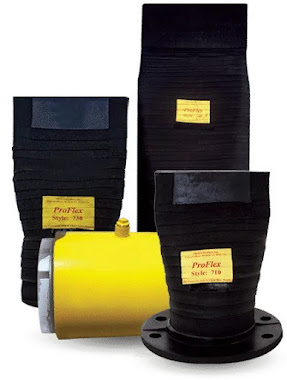Low Headloss In-Line Rubber Duckbill Check Valve
A Low Headloss In-Line Rubber Duckbill Check Valve is a specific type of check valve designed to provide a unidirectional flow with minimal headloss or pressure drop across the valve. This type of check valve is commonly used in applications where preserving the efficiency of fluid flow and minimizing resistance are essential considerations.
Key Features of Low Headloss In-Line Rubber Duckbill Check Valve:
Duckbill Design:
The valve features a duckbill-shaped elastomeric (rubber) diaphragm that acts as the check mechanism. The duckbill design allows the valve to open and permit flow in one direction while preventing backflow in the opposite direction.
In-Line Configuration:
The "in-line" designation indicates that the valve is designed to be installed directly into a pipeline or conduit, providing a seamless integration into the flow path.
Low Headloss:
The design of the duckbill check valve is optimized to minimize headloss, which refers to the reduction in fluid pressure as it flows through the valve. Low headloss is desirable in applications where maintaining efficient flow and minimizing pressure drop are critical.
Elastomeric Material:
The valve is constructed with elastomeric materials, typically rubber or other flexible polymers. These materials provide flexibility, resilience, and durability, allowing the valve to perform effectively over multiple cycles.
Silent Operation:
Duckbill check valves are known for their silent operation. The absence of moving parts and the flexible nature of the elastomeric diaphragm contribute to quiet and smooth operation, making them suitable for applications where noise reduction is important.
Applications:
Low Headloss In-Line Rubber Duckbill Check Valves find applications in various industries and systems, including:
Stormwater and Sewage Systems:
Used in stormwater and sewage systems to prevent backflow and flooding during heavy rainfall or high water levels.
Wastewater Treatment Plants:
Employed in wastewater treatment facilities to control the flow of liquids and prevent reverse flow in different stages of the treatment process.
Industrial Processes:
Applied in industrial processes where the unidirectional flow is crucial for process efficiency, and low headloss is desired.
Pump Systems:
Integrated into pump systems to prevent water hammer and backflow, protecting pumps and associated equipment.
Mining and Dewatering:
Used in mining operations and dewatering systems to control the discharge of water and prevent flooding.
Water Distribution Systems:
Installed in water distribution pipelines to ensure the one-way flow of water and prevent contamination.
HVAC Systems:
Incorporated in heating, ventilation, and air conditioning (HVAC) systems to control the flow of fluids and prevent backflow.
Renewable Energy Projects:
Utilized in renewable energy projects, such as hydropower and tidal energy systems, to control the flow of water and maintain system efficiency.
Low Headloss In-Line Rubber Duckbill Check Valves offer advantages in terms of simplicity, reliability, and low maintenance. Their unique design and materials make them suitable for specific applications where low headloss and efficient unidirectional flow are critical considerations.


Comments
Post a Comment